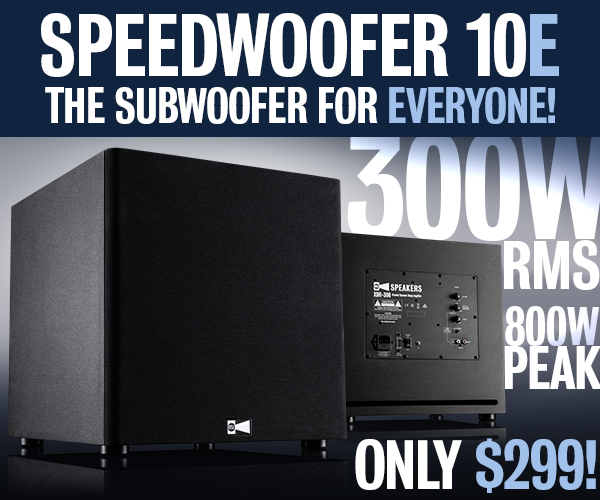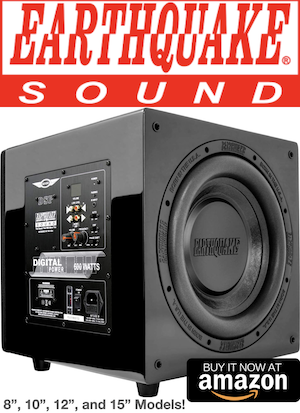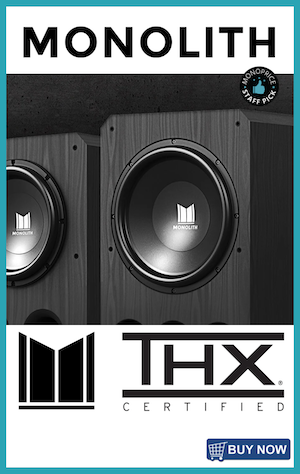levb
Registered
Thread Starter
- Joined
- Nov 25, 2021
- Posts
- 4
More
- Preamp, Processor or Receiver
- Unison Research UNICO SECONDO
- Universal / Blu-ray / CD Player
- Unison Research UNICO CD
- Other Speakers
- Triangle Celius ES (floor standing 3-way speakers)
We have a pretty good HiFi system purchased in 2004 that I haven’t done anything to besides getting some decent interconnects & speaker wires. It’s a purely audio system with Unison Research’s Unico Secondo integrated hybrid amplifier (newly acquired after the original Unico SE’s right channel got fried accidentally), Unison Research’s Unico CD and a pair of Triangle Celius ES flood standing 3-way speakers.
A couple of years ago, we moved into a house with a much larger living room and a semi-open layout. The salesperson at the audio shop where I got my new amplifier said that my space would really benefit from a subwoofer; even a pair of subwoofers if I could pull it off. Based on my room description, he recommended a JL E-112 or E110, or a REL S/510 or T/9x. Out of those, even the T/9X is more than I would like to spend ($700 - $1,000).
My other limitation is that the entire wall where my audio, wifi & tv are located runs on a single 20-amp circuit. That said, when listening to the hifi, the only other components that are always on are a couple of Panamax power conditioners, the wifi router, and the wifi extender. So when we’re listening to music, we have to stay under 20-amps with the amplifier, CD player, subwoofers & the always on components are running simulatenously.
The living room is approximately 18-ft wide by 25-ft long by 19-ft tall, but is bisected lengthwise by a mezzanine with a solid guardrail height wall, so the double height space is ~ 11-ft wide by 25-ft long, while another 8-ft of the entire length is 9-ft tall. Above the mezzanine is our open office that’s 11-ft wide by the full 25-ft length, and the continuous ceiling is 8-ft high over the mezzanine. The ceilings at both the lower portion & double height space are wood slats (2x2’s) with an equal solid / void ratio, so sound can penetrate the 12” high joist area above. The two short walls along the 11-ft double height portion are mostly glass, the long wall along the double height space is ¾” thick wood planks on furring strips while the long wall under the mezzanine is sheetrock with a couple of large steel-clad sliding doors. The guardrail height wall of the mezzanine which faces the double height wall is also clad with wood planks on furring strips. One end of the lower space is open to the dining room, and the kitchen beyond, so it’s definitely not a simple enclosed rectangle.
The left half of the living room is our relaxing area (couch, coffee table, audio & tv) while the right half is for my wife’s grand piano. The audio system is located along the wood clad double height wall and the couch is right under the edge of the mezzanine, some 10 – 11 feet away. The speakers are spaced 9 – 10 feet apart. This puts the left speaker about 3-ft from the glass wall, with a larger cactus between it and the glass, and the right speaker very close to the center of the room. We either listen to the music from the couch or turn the system up some when working in the kitchen … and the sound from afar (~ 25ft) is surprisingly good. I’m guessing that the best location for a subwoofer would be next to, or just behind, the right speaker; away from the glass wall and centered on the room, albeit not centered on the optimum listening position.
My question to all the subwoofer experts is can I get ONE subwoofer that isn’t any bigger than say 15” – 16” square that will give us a good enough improvement to what we already have, and do it for $1000, or less? The SVS SB-2000 Pro, SB-3000Pro or their 3000 Micro? Would the JL Dominion d110 bring anything extra to the equation to be worth going over my budget?
A couple of years ago, we moved into a house with a much larger living room and a semi-open layout. The salesperson at the audio shop where I got my new amplifier said that my space would really benefit from a subwoofer; even a pair of subwoofers if I could pull it off. Based on my room description, he recommended a JL E-112 or E110, or a REL S/510 or T/9x. Out of those, even the T/9X is more than I would like to spend ($700 - $1,000).
My other limitation is that the entire wall where my audio, wifi & tv are located runs on a single 20-amp circuit. That said, when listening to the hifi, the only other components that are always on are a couple of Panamax power conditioners, the wifi router, and the wifi extender. So when we’re listening to music, we have to stay under 20-amps with the amplifier, CD player, subwoofers & the always on components are running simulatenously.
The living room is approximately 18-ft wide by 25-ft long by 19-ft tall, but is bisected lengthwise by a mezzanine with a solid guardrail height wall, so the double height space is ~ 11-ft wide by 25-ft long, while another 8-ft of the entire length is 9-ft tall. Above the mezzanine is our open office that’s 11-ft wide by the full 25-ft length, and the continuous ceiling is 8-ft high over the mezzanine. The ceilings at both the lower portion & double height space are wood slats (2x2’s) with an equal solid / void ratio, so sound can penetrate the 12” high joist area above. The two short walls along the 11-ft double height portion are mostly glass, the long wall along the double height space is ¾” thick wood planks on furring strips while the long wall under the mezzanine is sheetrock with a couple of large steel-clad sliding doors. The guardrail height wall of the mezzanine which faces the double height wall is also clad with wood planks on furring strips. One end of the lower space is open to the dining room, and the kitchen beyond, so it’s definitely not a simple enclosed rectangle.
The left half of the living room is our relaxing area (couch, coffee table, audio & tv) while the right half is for my wife’s grand piano. The audio system is located along the wood clad double height wall and the couch is right under the edge of the mezzanine, some 10 – 11 feet away. The speakers are spaced 9 – 10 feet apart. This puts the left speaker about 3-ft from the glass wall, with a larger cactus between it and the glass, and the right speaker very close to the center of the room. We either listen to the music from the couch or turn the system up some when working in the kitchen … and the sound from afar (~ 25ft) is surprisingly good. I’m guessing that the best location for a subwoofer would be next to, or just behind, the right speaker; away from the glass wall and centered on the room, albeit not centered on the optimum listening position.
My question to all the subwoofer experts is can I get ONE subwoofer that isn’t any bigger than say 15” – 16” square that will give us a good enough improvement to what we already have, and do it for $1000, or less? The SVS SB-2000 Pro, SB-3000Pro or their 3000 Micro? Would the JL Dominion d110 bring anything extra to the equation to be worth going over my budget?












